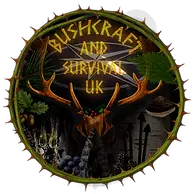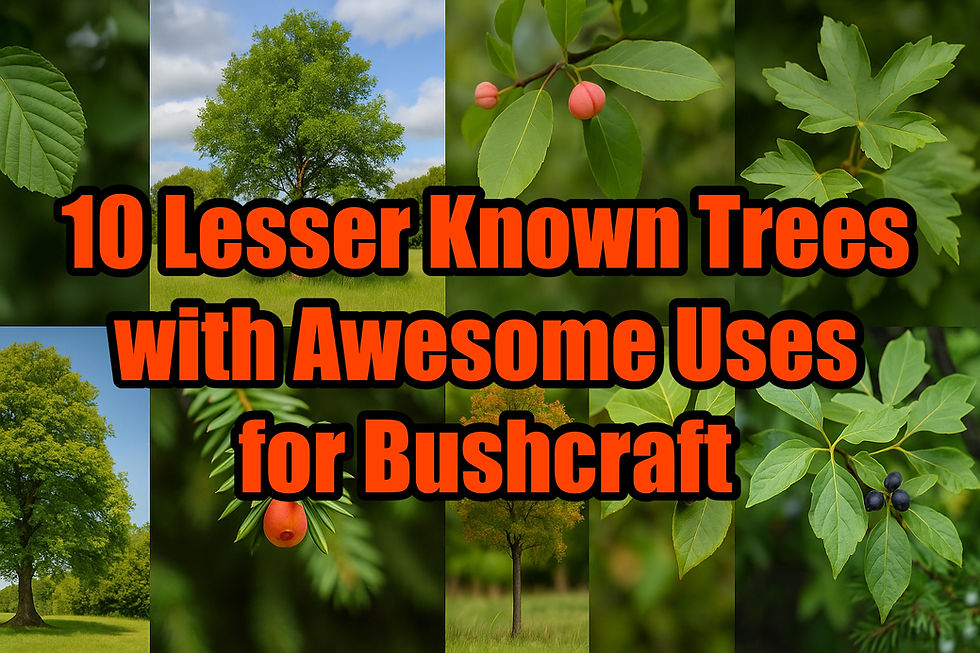What is the Best Bushcraft Knife?
- Dan Lake

- May 15
- 5 min read
Updated: Jun 9
Understanding the Importance of a Good Knife in Bushcraft
When discussing Bushcraft and Survival Equipment, the first tool that comes to mind is the knife. This iconic wilderness tool plays a vital role in the outdoors. Let's explore its significance and what to look for when making your choice.
The History of Cutting Tools
Bushcraft revolves around decision-making. Choosing the right knife can mean the difference between success and failure in the wild. A good knife is more than just a tool; it becomes your trusted companion. You should know your favorite knife intimately, much like our ancestors did.
The history of cutting tools is fascinating. Imagine our ancestors crafting their first tools from stone and bone. These primitive objects were essential for survival. They helped with everything from harvesting animals to preparing food. A blade, in ancient times, was truly a man's best friend.
As time progressed, humans expanded our knowledge of materials. We transitioned from stone to bronze and then to iron, gradually creating the cutting tools we know today. This evolution led to the modern Bushcraft knife, designed for versatility and durability in the wild.

Basic Anatomy of a Knife
Understanding the anatomy of a knife is crucial. Familiarizing yourself with its parts will help you better assess the options available.

What Makes a Good Bushcraft Knife?
First and foremost, the material of the blade is vital. Modern Bushcraft knives are typically made from a variety of steels, each with strengths and weaknesses.
High carbon steels, like 1095 and O1, are favored for their excellent edge retention and ease of sharpening, making them ideal for fine cutting tasks. However, they are prone to rust and require regular maintenance.
Stainless steels, such as AUS-8 and 440C, are popular due to their corrosion resistance. While they may not hold an edge as long, they are easier to care for.
Tool steels like D2 provide a good balance between hardness and toughness. Although they are durable, they can be hard to sharpen.
Modern powdered metallurgy steels like CPM-3V and S30V combine high hardness with wear resistance and toughness. They are excellent for demanding tasks, though they come at a higher price point.
Each steel type offers unique performance attributes, catering to the diverse needs of outdoor enthusiasts.
Comfort and Grip
Comfort and grip are crucial. A good knife should feel like an extension of your hand, allowing for long hours of use without discomfort. Look for ergonomic handles crafted from materials that offer a solid grip, even when wet. This is especially important when bushcrafting or surviving in slippery conditions.
Wooden handles are often a classic choice. They can be beautifully crafted from spalted woods and stabilized with materials like "cactus juice," creating a durable and attractive finish.
Blade Shapes and Grinds
Blade shapes in bushcraft knives vary widely. Common styles include:
Drop point: This iconic shape features a curved edge and strong tip, making it versatile for slicing and piercing tasks.
Clip point: This style has a concave cutout near the tip, allowing for precise control.
Tanto blades: Characterized by their angular tip, these blades excel in piercing tough materials.
The grind of the blade also impacts performance. Full flat grinds provide a thin edge for slicing, while Scandinavian grinds offer excellent control and ease of sharpening—favored by many bushcrafters.

Multi-Functional Features
Beyond cutting, knives serve other essential functions, such as fire-starting. The most common method for bushcrafters is using a ferro rod. For effective sparks, your knife should have a sharp 90-degree spine. This spine must be totally square to create the friction needed for producing sparks.
This square edge can also prove useful for stripping bark, removing rough edges from carvings, or preparing fine tinder without excessive cutting.

Weight and Balance
The knife's weight and balance matter significantly. A well-balanced knife feels good in your hand, making tasks like carving and chopping efficient. You don’t want something too heavy for long periods, but it should be sturdy enough to handle tough jobs without bending or breaking.

Emphasizing Durability
Durability is key. A quality blade should withstand the rigors of outdoor use. Whether you're battening wood for a fire or slicing through hardwood, a well-made knife will not fail you.
The thickness of the blade plays a role here. A thicker blade can endure more abuse, while a thinner blade excels in slicing. Ideally, a good thickness for a durable knife should be between 4-6mm, with a length around 4-6 inches.

Maintenance Matters
A good knife should be easy to sharpen and maintain. Keeping the edge in top shape is crucial during outdoor ventures. Treat your knife like you would a valuable relationship—care for it diligently.
Whether using a whetstone or a more thorough sharpening method, ensure your knife's components are well-oiled. I prefer natural oils like extra virgin olive oil or the fat from cooking meat. Making your own lubrication product can also enhance longevity.
The Importance of Sheath Quality
Lastly, consider the sheath that comes with your knife. A durable, well-designed sheath protects the blade and ensures easy carrying. Leather sheaths, in particular, are enticing. They can easily be maintained with oils and fats.
Other options include canvas, kydex, and even tree barks like birch or willow. Ensure the sheath is secure for safe and quick access, placed thoughtfully away from your groin.

Conclusion: Finding Your Ideal Knife
In conclusion, a good bushcraft knife is more than just materials or blade shape. It’s about how it feels in your hand and how it stands against the challenges of the wild. Whether you're carving a wooden spoon, preparing a meal, or building a shelter, finding the right knife that resonates with you will enhance your experience.
Bushcraft and Survival UK Knives - Click the link to explore our awesome discounted knife selection.
If you're interested in primitive knife-making or anything related, here's an interesting link to Will Lord's site.
Although a bit pricey, TBS Knives offers quality blades used by many bushcrafters and survivalists.









Comments